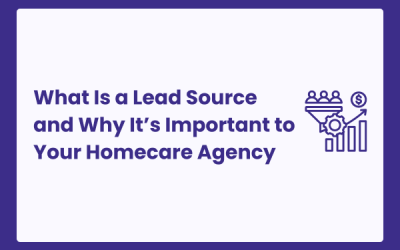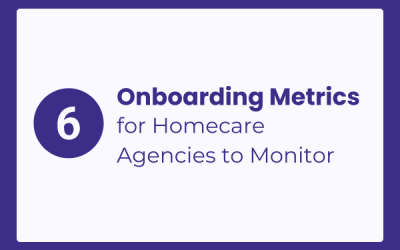In the dynamic landscape of homecare services, understanding performance metrics is crucial for agencies to optimize their patient intake process.
These metrics provide insights into how effective your agency is running and highlight areas for improvement.
By understanding these metrics, you will be better equipped to enhance your patient intake process and drive your agency’s growth.
This blog will cover the four essential patient intake metrics that every homecare agency should be tracking.
1. Time to Admittance
What is this? Time to admittance is a critical metric that measures the speed at which a patient is admitted and receives care after the initial contact.*
Why is it important? Monitoring this metric helps understand how long it takes for a lead to become a patient. In today’s competitive market, speed is the ultimate differentiator as patients will go with the agency that can get them services the soonest. Also, tracking this metric allows you to set expectations for the process and timeline with new leads.
How do I calculate it? Subtract the date of the initial contact with the patient from the date of admission. This will provide the time it took for the patient to be admitted after the first interaction.
Time-to-Admittance = (Admission Date – Initial Contact Date)
*Note: Some agencies will track the date the patient first receives care rather than the admission date.
2. Conversion Rate
What is this? The conversion rate represents the percentage of potential patients who become admitted patients.
Why is it important? It measures the effectiveness of your agency’s efforts in converting leads or inquiries into actual admissions. A higher conversion rate indicates successful marketing strategies, efficient communication, and a positive reputation.
How do I calculate it? Divide the number of admitted patients by the total number of leads (potential patients) and multiply by 100 to denote it as a percentage.
Conversion Rate = (Number of Admitted Patients / Number of Leads) x 100
3. Sourcing Effectiveness
What is this? Sourcing effectiveness measures the efficiency and success rate of different patient acquisition channels. It involves analyzing the sources from which patients come, such as referrals, website inquiries, social media, or advertising campaigns.
Why is it important? By monitoring the effectiveness of each source, you can allocate resources appropriately, invest in high-performing channels, and adjust your marketing efforts to target the most productive sources.
How do I calculate it? Divide the number of admitted patients from that source by the total number of admitted patients. Multiply the outcome by 100 to express it as a percentage.
Sourcing Effectiveness = (Number of Admitted Patients from a Source / Total Number of Admitted Patients) x 100
4. Patient Acquisition Cost
What is this? Patient acquisition cost (PAC) refers to an agency’s spending on finding and acquiring a new patient. This includes the cost of advertising, marketing, and other efforts required to persuade someone to become a patient of the agency. This cost is called Customer Acquisition Cost (CAC) in other industries.
Why is it important? By tracking marketing costs per patient, you can evaluate your marketing campaign’s return on investment (ROI) and identify cost-effective channels for patient acquisition. It enables you to allocate resources wisely and optimize your marketing strategies for better results.
How do I calculate it? Divide the total cost (media spend in total or specific channel/campaign to acquire patients) by the number of new patients admitted from the same channel/campaign.
Patient Acquisition Cost = Total Marketing Costs / Number of Admitted Patients
Conclusion – Knowing Your Metrics is Half the Solution
Homecare agencies should monitor several key metrics to optimize their patient intake process and drive growth.
By tracking these metrics, agencies can evaluate the efficiency of their patient intake process, identify improvement areas, and allocate resources more effectively.


